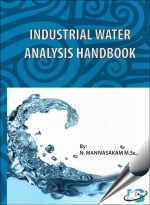Tab Article
Part – I ‘Introduction’ provides a detailed introduction on analysis of water along with parameters to be determined for each industrial use, thus helps to reduce the time required for analysis and labor involved in analysis.
In Part – II ‘Chemical Analysis’, elaborate testing procedures for all the parameters necessary for industrial uses are given. Exclusive chapters in the beginning on ‘Sampling of water’ and ‘Sampling of Boiler water’ will provide the analyst a detailed sampling program and the important sampling points so that the analysis would be more meaningful and more useful. Detailed analytical procedure for 65 chemical parameters are given which makes this book a handy reference for carrying out analysis without any difficulty.
Part – III ‘Microbiological Analysis’ deals with the identification and determination of the density of microbial organisms that are likely to interfere in industrial processes. To aid the analyst, separate chapters starting from the Requirement of Chemicals, Glassware and Equipment, Technics involved in Microbiological Analysis, Sampling of Water for Microbiological Examination and Preparation of Media and Reagents, to identification of specific organisms are provided with a detailed discussion.
Part – IV ‘Microscopical Examination’, a brief account of microscopical organisms is given. The common organisms present in water along with their habitat and significance are also dealt. This book would serve as a handy reference to all wet processing industries. This book would be helpful in multifarious ways to Analysts, Chemists, Engineers, and Managers of industries and Water Treatment Consultants, Firms engaged in Water Treatment and other personnel engaged in water analysis and water treatment. This apart, this book would also be a source book to students of Industrial Engineering, Chemical Engineering, Industrial Chemistry, Applied chemistry, Environmental Engineering and Environmental Science and other allied faculties of Colleges and Universities.


